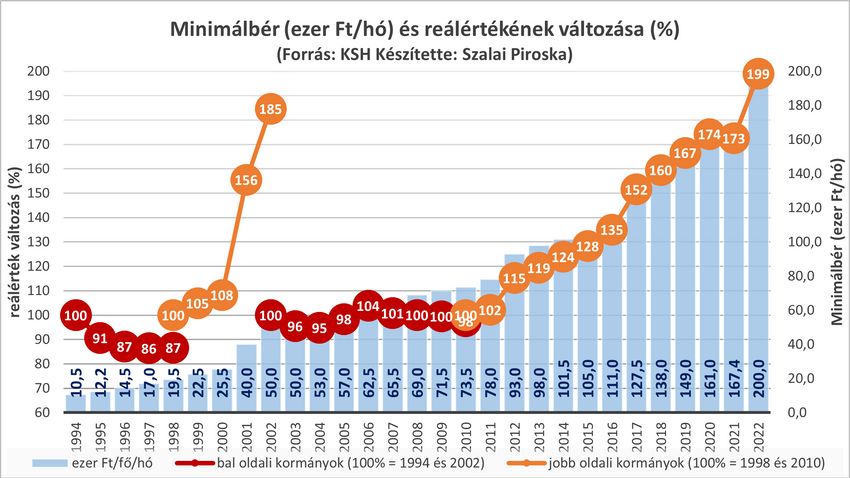Next year, the earnings of those working in manual jobs may increase by up to fifteen, but in many cases by twenty percent. The significantly accelerated wage catch-up is also helped by the worsening labor shortage and the significant increase in minimum wages, even compared to the period before the epidemic. During the pandemic, salaries in clerical jobs increased more.
Wage negotiations have already begun for most players in the private sector, although many companies will raise wages . In response to the question of the Hungarian Nation, the trade unions reported more or less favorable experiences of the negotiations so far.
Businesses are preparing to settle the salaries of employees: the minimum wage and the guaranteed minimum wage will increase by nearly twenty percent from January , which is a significant catch-up in real terms. In addition to the mandatory minimum wages, the salaries of higher earners will also increase.

KSH
Based on experience so far, next year's wage increases may once again bring bigger increases in physical jobs after the stagnation of the past two years. According to the information provided by the representations, the companies involved are expecting an average wage increase of 15 percent.
Several employers do not consider the 20% wage settlement unacceptable in certain positions. The majority of manual workers can count on a double-digit gross wage increase even in earning categories above the minimum wage.
Many businesses are forced to settle the wages of their physical staff.
- A significant increase in minimum wages causes wage congestion ; that is, anyone who receives more than this year's mandatory minimum wage, but less than or the same as next year's wage, must settle their wage.
- The growing shortage of professionals is also causing serious wage pressure. In most manual jobs, there is again competition for skilled labor, and this competition is won by the player who offers the highest salary.
- The epidemic restrained the double-digit annual wage increases that had become almost commonplace in previous years.
Wage increases of up to 15 percent typically result from increases in the basic salary and other benefits.
Last year and this year, retaining jobs in physical jobs became of primary importance. Several employers tried to compensate for the reduction in the increase of the basic salary with extra benefits. For the duration of the shutdowns, the base salary or the postponement of the working time frame is a guaranteed income. This year, the majority of white-collar workers perceived the gross wage increase less, because their rate often barely exceeded inflation.
physical wages exceeded the previous year by 12.9 percent, in the same period of 2020 the increase was only 8.5 percent, with much higher inflation. This year, the gross physical average wage increase was even more modest, at 7.5 percent.
Thus, the expected significant increases in 2022 also include compensation for the previous years, the representatives stated. At the same time, the majority of white-collar employees can benefit from a wage increase of more than ten percent in fewer places. Their salary in 2020 and 2021, however, increased more than physical wages, by an average of 9-10 percent.
the full article here.













